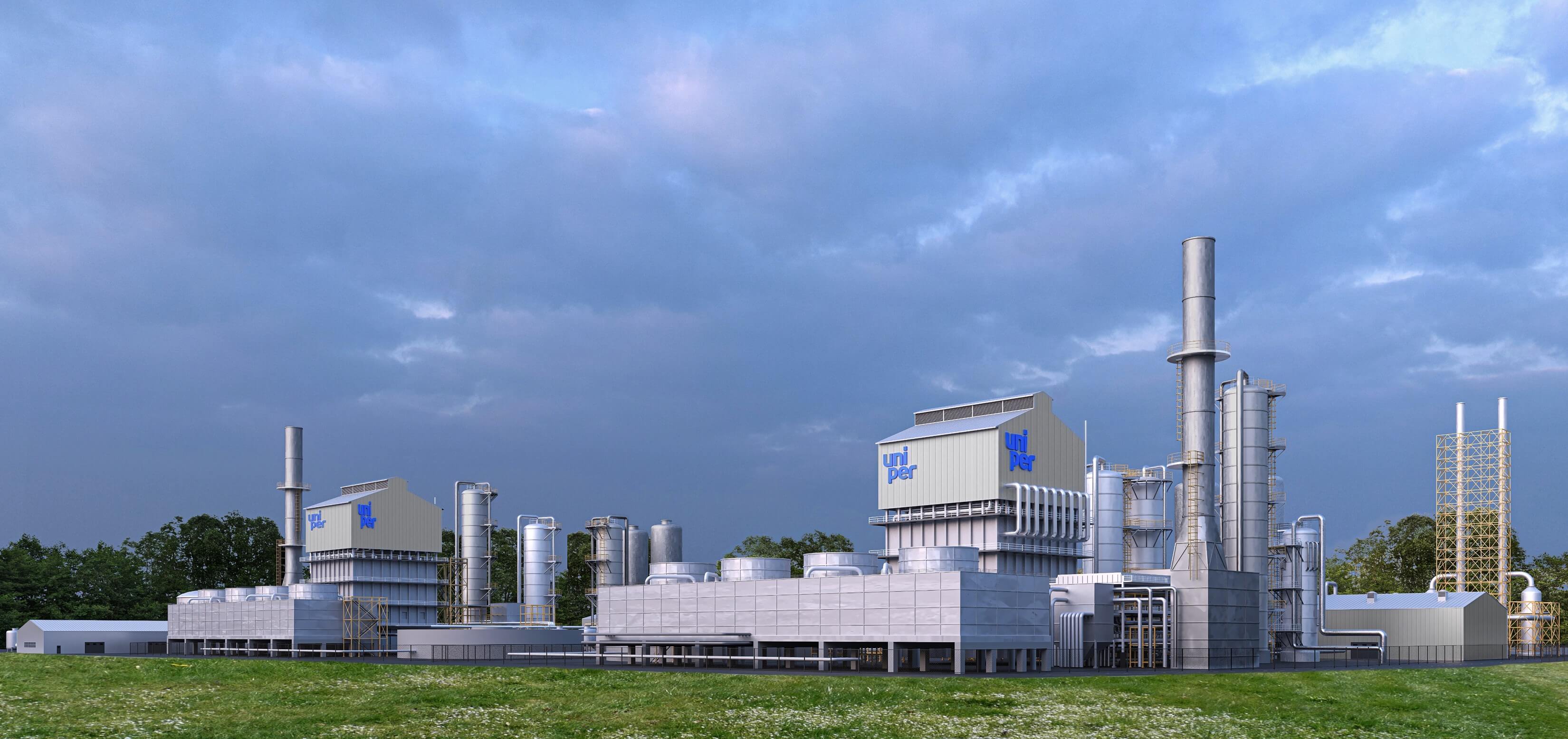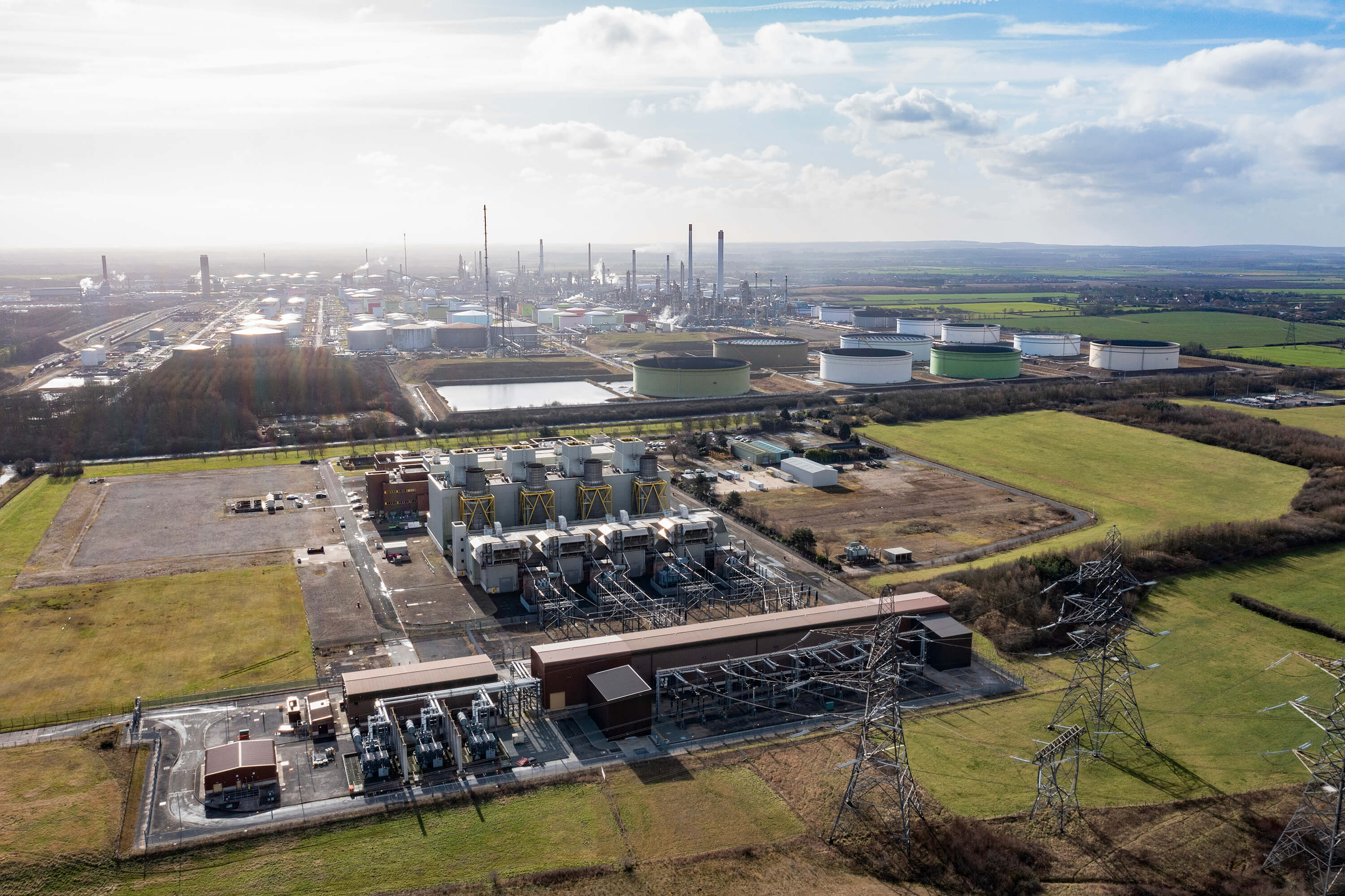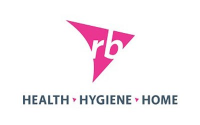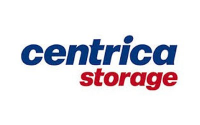Humber H₂ub®
The Humber H₂ub® project is a proposed large scale, low carbon hydrogen production facility at Uniper’s Killingholme site. The project includes an up to 720MW blue hydrogen project (Humber H₂ub® (Blue) project) and an up to 120MW green hydrogen project (Humber H₂ub® (Green) project) and is expected to be operational later this decade. The hydrogen produced could be used to decarbonise heavy industry, transport and power throughout the Humber region.
The Humber H₂ub® project is part of Uniper’s wider aspirations for our Killingholme Energy Transformation Hub .
2 min read

Collaboration and the energy transition
Situated in the heart of the industrial Humber, Uniper’s Killingholme site has a key role to play in the decarbonisation and economic growth of the region, supporting customers in this industrial cluster to transition to a net zero future.
Uniper has been advancing plans for the future development of the site, working with key local and national partners on initiatives that could help decarbonise the region, most notably the Humber H₂ub® project.
Uniper and Phillips 66 Limited have signed a collaboration agreement to work together towards a supply of green hydrogen from the Humber H₂ub® (Green) project to Phillips 66 Limited’s Humber Refinery from 2029. The hydrogen would be used to replace refinery fuel gas in industrial-scale fired heaters as part of Phillips 66 Limited’s plans to reduce the Humber Refinery’s scope 1 operational emissions.
The Humber H₂ub® (Blue) project
The Humber H₂ub® (Blue) project will include low carbon hydrogen production capability with a capacity of up to 720 megawatts (MW). The hydrogen produced could be used to decarbonise heavy industry, transport and power throughout the Humber region. The project will be focusing on potential industrial uses of the hydrogen but to give a sense of scale, production of 720MW would be enough low carbon hydrogen to heat over half a million homes a year.
In December 2022, the project took a significant step forward, with the award of contracts to three companies, to deliver the process design studies; to include design of the main hydrogen production technology and carbon capture plant for the proposed Humber H₂ub® project. The next stage in the project will be the front end engineering and design (FEED) phase, ahead of a final investment decision, and potential operation from 2030 onwards.
Carbon capture and storage (CCS) is a key part of the process to reduce carbon emissions in the production of blue hydrogen. It involves the removal and capture of carbon dioxide (CO2) from industrial and power plant emissions, transporting it away to be securely stored underground, often in aquifers or depleted oil and gas fields.
For the Humber H₂ub® (Blue) project, the captured carbon would be transported through proposed regional infrastructure for permanent storage offshore in re-purposed depleted gas fields.
The planned development at Killingholme could see the capture of approximately 1.6Mt of carbon per year.

The Humber H₂ub® (Green) project
The Humber H₂ub® (Green) project will include electrolytic or green hydrogen production capability, which meets the UK Low Carbon Hydrogen Standard, with a capacity of up to 120MW and potential future expansion of a further 200MW+. The hydrogen would be used to replace refinery fuel gas in industrial-scale fired heaters as part of Phillips 66 Limited’s plans to reduce the Humber Refinery’s scope 1 operational emissions.
The electricity for the Humber H₂ub® (Green) hydrogen project could come from a range of sources; future on site development, renewable generation, as well as low carbon power generation, either directly connected to the electrolyser or via the national grid, enabled by power purchase agreements and renewable guarantees of origin.
Uniper and Phillips 66 Limited have signed a collaboration agreement to work together towards a supply of green hydrogen from the Humber H₂ub® (Green) project to Phillips 66 Limited’s Humber Refinery from 2029. The next phase in the project will be Front End Engineering Design (FEED) studies, which are due to take place from 2025.

The potential for hydrogen
Situated in the heart of the industrial Humber, our Killingholme site has huge potential as an energy transformation hub, supporting the transition to a net zero future. It is an ideal location for large-scale low carbon hydrogen production, with available existing infrastructure, including: grid connections, demineralised water, and a cooling water system from existing power plants. It also offers a suitable large plot space to facilitate electrolysis based hydrogen production.
Supporting decarbonisation across the Humber
The Humber region is recognised as the UK’s most carbon intensive industrial region and hydrogen will be vital in decarbonising and securing the region’s economy.
Uniper’s plans would also contribute to the Humber’s emergence as a leader in clean energy production; future proofing the industry and creating skilled jobs in the region. We anticipate that hydrogen production at Killingholme would create opportunities during the construction phase and once it becomes operational, create additional permanent jobs, as well as helping to safeguard jobs by supporting industrial decarbonisation.
Hydrogen will be at the forefront of helping the UK deliver its net zero ambitions by 2050 and Uniper, its partners and its Killingholme site can play a key role in making this happen.
For more information, please visit Project Humber H₂ub®.
Hydrogen generation
CCS
Regeneration
Cross-industry applications
“
The hydrogen produced could be used to decarbonise heavy industry, transport and power throughout the Humber region.”
Contact
Invest Humber: Clean Growth in the UK’s Energy Estuary was created and is managed by Future Humber.
Future Humber promotes the region's distinctive strengths to the widest audience and accelerates opportunities to unlock the potential in the Humber.
Diana Taylor is the Managing Director of Future Humber. She is responsible for guiding the vision and strategy to market the Humber to the UK, Europe, and beyond. Diana works with partners and stakeholders to build the voice of the region and enable businesses and organisations within the Humber to succeed and grow.
If you have a question about Invest Humber or would like to find out more about any of the projects included on the website, you can contact Diana below.








